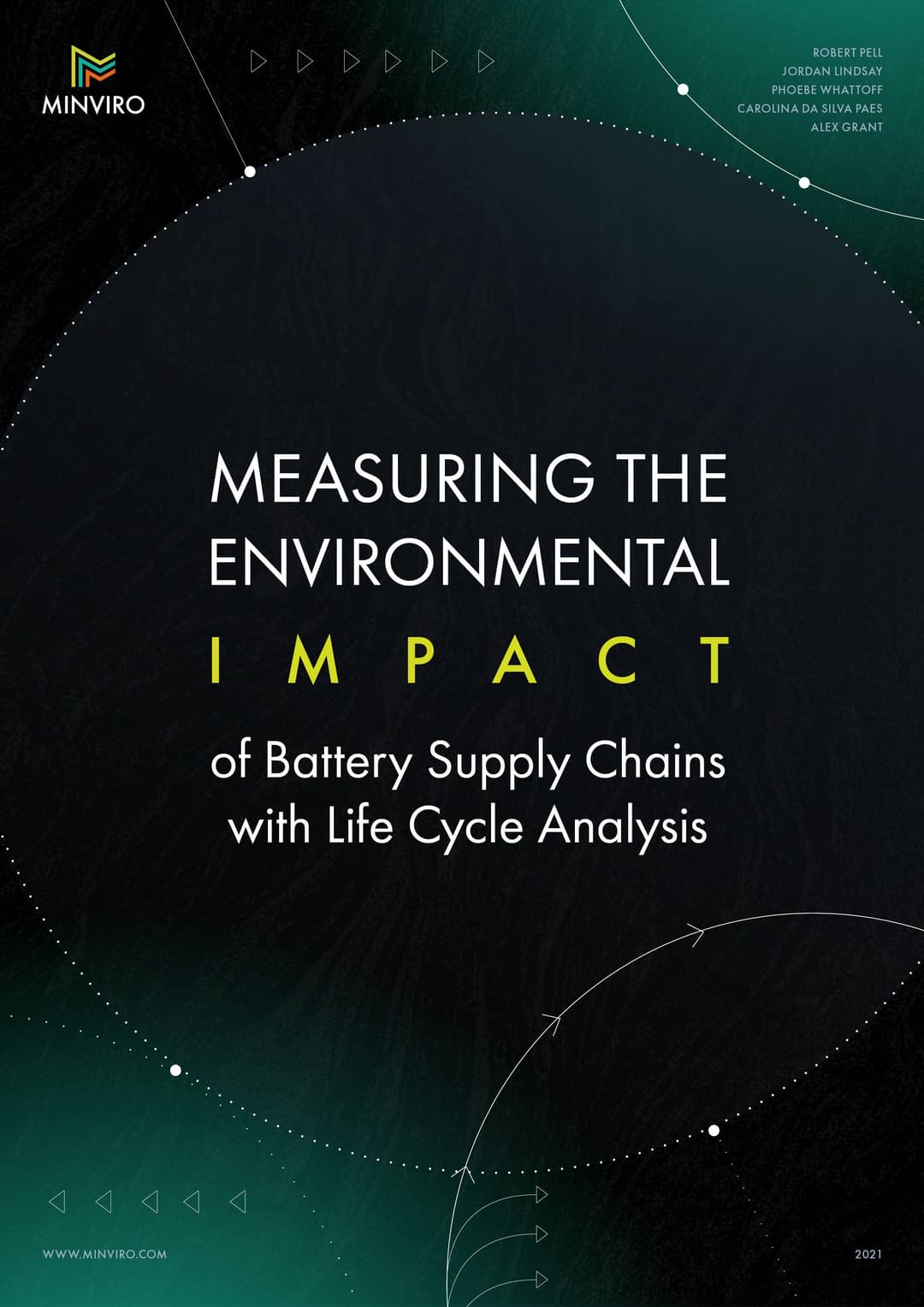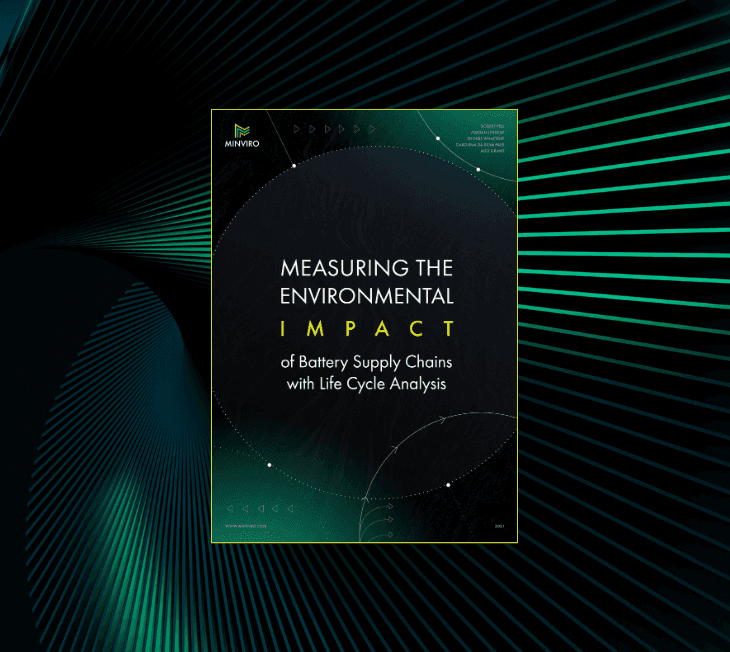- solutions
- industries
- about us
- resources
Whitepapers
Measuring the Environmental Impact of Battery Supply Chains with Life Cycle Analysis
By Robert Pell, Laurens Tijsseling, Phoebe Whattoff, Alex Grant, Jordan Lindsay, Carolina da Silva Paes
This white paper analyses the environmental impacts of battery supply chains for electric vehicles (EVs), focusing on the significant differences across various production routes. By employing Life Cycle Analysis (LCA), it highlights the crucial role of material selection and manufacturing in reducing the environmental footprint of EV batteries.
Download
The outline
What you will gain from this paper
Dive into the study's exploration of NMC-811 lithium-ion batteries, showcasing how their production route choices significantly influence environmental outcomes. This detailed analysis reveals the importance of sustainable material sourcing and the adoption of innovative manufacturing practices. With a focus on actionable insights, the paper equips stakeholders with knowledge to drive the decarbonisation effort forward, emphasising the impact of raw material decisions and advanced production technologies.
This specific white paper is focused on the different materials going into a battery pack, such as nickel, graphite, lithium, cobalt, manganese and aluminium.
Battery Raw Materials & Environmental Impact
The choice of raw materials significantly influences the environmental impact of batteries. Factors such as mining methods, processing technologies, and geographic location of resources contribute to the variability in the life cycle impacts of nickel, cobalt, lithium, and other essential materials.
Impact Variability Among Battery Chemistries
Different battery chemistries entail distinct environmental footprints, primarily due to their unique material compositions and production processes. NMC-811 batteries, popular in Western EVs, serve as a prime example, illustrating the wide impact range resulting from various production routes.
The Future of Battery Supply Chains
Future advancements in battery technology and shifts in global energy mixes pose both challenges and opportunities for reducing environmental impacts. The white paper discusses the potential of emerging technologies and the importance of strategic raw material sourcing for achieving sustainability goals.
LCA as a Decision-Making Tool
Life Cycle Analysis offers a comprehensive framework for assessing the environmental impacts of batteries, guiding manufacturers, and policymakers towards more sustainable choices. The paper highlights the role of LCA in comparing different battery types and informing supply chain decisions.
Strategies for Impact Reduction
Adopting low-impact production routes, enhancing supply chain transparency, and leveraging renewable energy sources are key strategies for minimising the environmental footprint of battery production. Within the white paper, actionable insights are outlined for manufacturers aiming to contribute to a more sustainable energy future.
download
Get access today
Fill in the form below
Download
